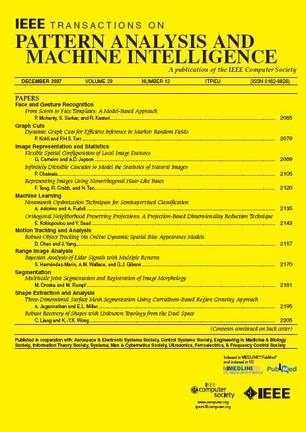提高连续深度模型的计算复杂度:具有可训练数值格式的神经常微分方程。
IF 18.6
1区 计算机科学
Q1 COMPUTER SCIENCE, ARTIFICIAL INTELLIGENCE
IEEE Transactions on Pattern Analysis and Machine Intelligence
Pub Date : 2025-08-15
DOI:10.1109/tpami.2025.3599629
引用次数: 0
摘要
神经常微分方程(节点)作为残差网络的连续时间类比。他们为神经网络架构设计提供了系统理论的视角,并为时间序列建模、预测和应用提供了自然的解决方案,其中可逆神经网络是必不可少的。然而,由于大量的数值求解器开销,这些模型的性能较慢。例如,一个流行的节点训练和推理解决方案包括使用自适应步长求解器,如流行的Dormand-Prince 5(4) (DOPRI)。这些求解器会随着方程与训练数据的拟合和复杂度的增加而动态调整函数评估数(NFE)。然而,这样做的代价是增加了函数求值的次数,从而降低了计算效率。在这项工作中,我们提出了一种新颖的方法:使数值积分方案的参数可训练。通过这样做,数值方案动态地适应节点的动态,从而产生一个具有固定NFE的模型。我们将提出的可训练解算器与最先进的方法(包括DOPRI)进行比较,以进行不同的基准测试,包括分类、密度估计和动态系统建模。总体而言,我们报告了所有基准在精度指标方面的最先进性能,同时通过可训练的固定步长求解器提高了计算效率。这项工作为实用和高效的节点建模应用程序开辟了新的可能性。本文章由计算机程序翻译,如有差异,请以英文原文为准。
Enhanced Computational Complexity in Continuous-Depth Models: Neural Ordinary Differential Equations With Trainable Numerical Schemes.
Neural Ordinary Differential Equations (NODEs) serve as continuous-time analogs of residual networks. They provide a system-theoretic perspective on neural network architecture design and offer natural solutions for time series modeling, forecasting, and applications where invertible neural networks are essential. However, these models suffer from slow performance due to heavy numerical solver overhead. For instance, a popular solution for training and inference of NODEs consists in using adaptive step size solvers such as the popular Dormand-Prince 5(4) (DOPRI). These solvers dynamically adjust the Number of Function Evaluations (NFE) as the equation fits the training data and becomes more complex. However, this comes at the cost of an increased number of function evaluations, which reduces computational efficiency. In this work, we propose a novel approach: making the parameters of the numerical integration scheme trainable. By doing so, the numerical scheme dynamically adapts to the dynamics of the NODE, resulting in a model that operates with a fixed NFE. We compare the proposed trainable solvers with state-of-the-art approaches, including DOPRI, for different benchmarks, including classification, density estimation, and dynamical system modeling. Overall, we report a state-of-the-art performance for all benchmarks in terms of accuracy metrics, while enhancing the computational efficiency through trainable fixed-step-size solvers. This work opens up new possibilities for practical and efficient modeling applications with NODEs.
求助全文
通过发布文献求助,成功后即可免费获取论文全文。
去求助
来源期刊
CiteScore
28.40
自引率
3.00%
发文量
885
审稿时长
8.5 months
期刊介绍:
The IEEE Transactions on Pattern Analysis and Machine Intelligence publishes articles on all traditional areas of computer vision and image understanding, all traditional areas of pattern analysis and recognition, and selected areas of machine intelligence, with a particular emphasis on machine learning for pattern analysis. Areas such as techniques for visual search, document and handwriting analysis, medical image analysis, video and image sequence analysis, content-based retrieval of image and video, face and gesture recognition and relevant specialized hardware and/or software architectures are also covered.

 求助内容:
求助内容: 应助结果提醒方式:
应助结果提醒方式:


